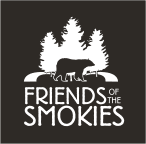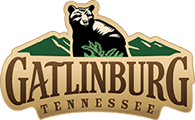While rafting with Rafting in the Smokies, your guides might draw your attention to some of the wildlife that can be seen from the river. You might see a passing crane, a family of turtles, or perhaps a bear or deer near the shoreline. The Smoky Mountain area is home to a wide variety of wildlife. Here are some that call the Smokies home.
Black Bear
Did you know that the black bears in the Smokies hibernate? They sleep for long periods of time, sometimes coming out if there are warming trends, and have their babies during this time. With two per square mile (and 1,500 in the whole park), don’t be surprised if you see a black bear. You can learn more about these fascinating inhabitants of the area by reading more about them at the Great Smoky Mountains National Park website.
Elk
Even more massive than a black bear is elk, yet the black bear is the elk’s main predator. They come out in the early morning and late evening or when there is a lot of cloud cover in the area or around times when storms roll in. About an hour’s drive south to the open areas of Cataloochee is the best place for viewing elk. You can take I-40 from Hartford down to North Carolina and take exit 20 to Cove Creek Road and follow the signs into the Cataloochee Valley. The herd there comes from the introduction of the elk restoration program that began in 2001. Elk populations started at two releases of 25 and 27 animals, and the herd has grown since then to between 150 and 200. The biodiversity and availability of food resources in the Smoky Mountains have helped the herd thrive. They have expanded their diet from just grass to acorns as well.
Salamanders
Did you know that the Smoky Mountains are known as the “Salamander Capital of the World?” There are such a diverse group of salamanders in the park. Home to five different families of salamanders, 24 species of the lungless salamander family live in the southern Appalachian Mountains. These unique amphibians breathe through the walls of the blood vessels found under their skin and within their mouth and throat lining. The largest salamander you might see are the Hellbenders (the biggest aquatic salamander in the United States), which grow up to 29 inches in length.
Turkey
Wild turkey can be found in the daytime since they roost in trees. If you find one turkey, there are likely more since they travel in groups, called flocks. You’re more likely to see them in the lower elevations of the Great Smoky Mountains National Park and the open fields in Cades Cove or near the Sugarlands Visitor Center. Thanks to conservation efforts, their numbers continue to increase so expect sightings to be easier. The Knoxville News Sentinel wrote an article in 2014 about the wild turkey comeback (the highest wild turkey population in 100 years).
So how should you prepare yourself for wildlife viewing?
- Make sure to carry binoculars and a good camera so you can view from a distance.
- Scan the trees for animals that like to live in the branches.
- Be quiet, and make sure you don’t approach anything if you see wildlife emerging.
- Don’t try and feed them or leave food for them!
We hope that you have fun on your visit to Rafting in the Smokies and the surrounding areas. Even after rafting season comes to a close, every time is a good time to look for wildlife in the area!











